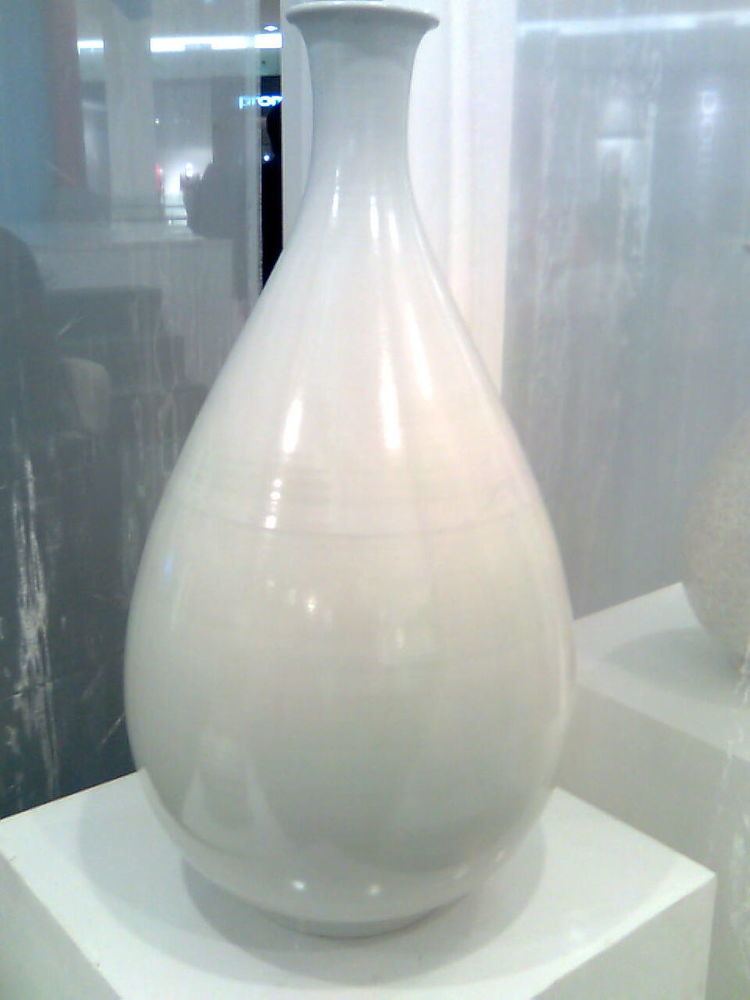Hangul 조선백자 Revised Romanization Joseon baekja | Hanja 朝鮮白磁 McCune–Reischauer Chosŏn paekcha | |
 | ||
Joseon white porcelain or Joseon baekja refers to the white porcelains produced during the Joseon dynasty (1392-1910).
History
White porcelains were preferred and praised than any other porcelains during the time to represent Korean Confucian ethics such as frugality and pragmatism. In overall, Joseon ceramics undergone numerous transformations during the five hundred-year period and is generally divided into three major periods; the early, the middle, and the late period. Although the chronology of Joseon ceramics differs between scholars, three major events affected kiln production; the outcome of the Imjin wars, the establishment of Bunwon (hangul: 분원; hanja: 分院), government-subsidized kilns at Bunwon-ri, Gwangju near Seoul in 1751, and the privatization of Bunwon in 1884. Joseon white porcelains are characterized by the beauty of unpretentious forms, understated decoration, and subtle use of color, reflecting the ideals of Korean Confucian state.
